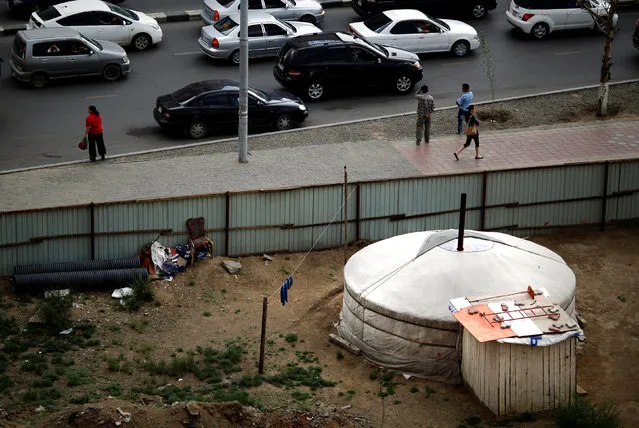
A ger, a traditional Mongolian tent, stands near a busy street in downtown Ulaanbaatar, Mongolia June 22, 2013. (Photo by Carlos Barria/Reuters)
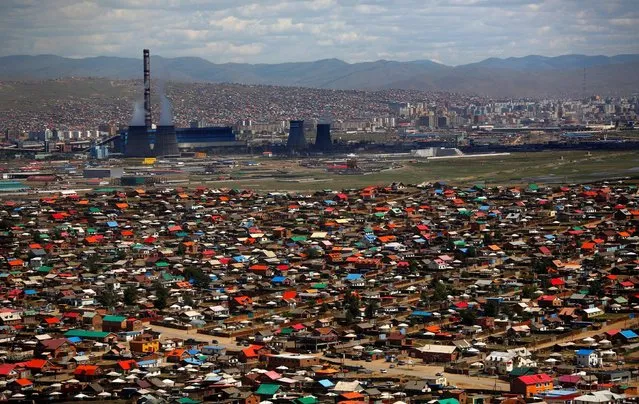
An area known as a ger district is seen in Ulaanbaatar, Mongolia June 28, 2013. (Photo by Carlos Barria/Reuters)
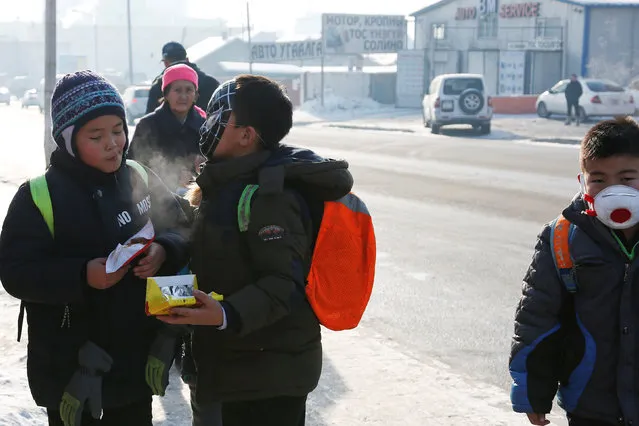
Children walk in street in Ulaanbaatar, Mongolia as the wave of extreme cold hits the country December 23, 2016. (Photo by B. Rentsendorj/Reuters)
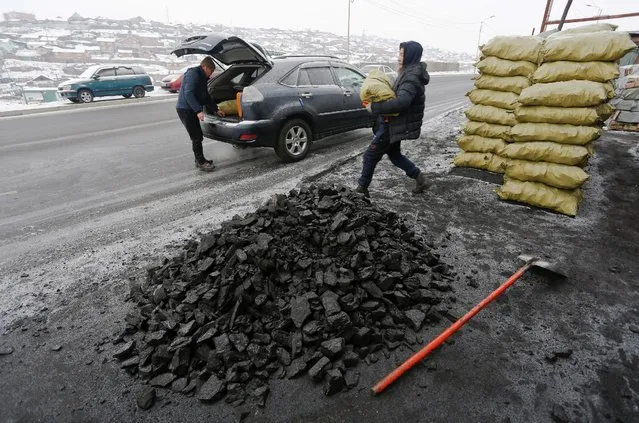
People load coal into a car in Ulaanbaatar, Mongolia as the wave of extreme cold hits the country December 22, 2016. Picture taken December 22, 2016. (Photo by B. Rentsendorj/Reuters)
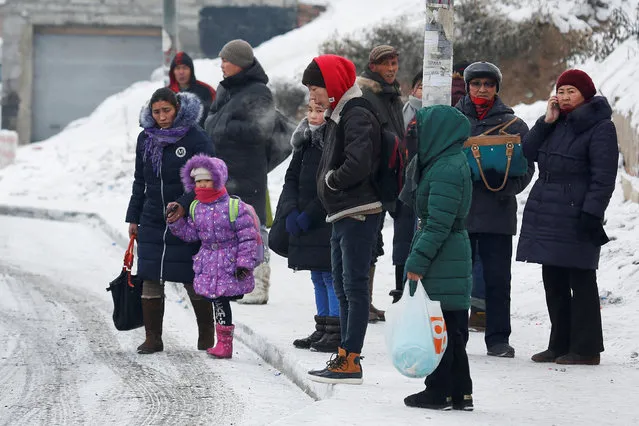
People wait for the bus in Ulaanbaatar, Mongolia as the wave of extreme cold hits the country December 22, 2016. Picture taken December 22, 2016. (Photo by B. Rentsendorj/Reuters)
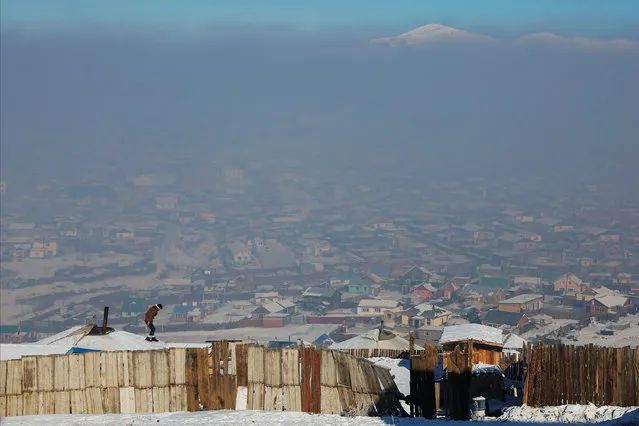
A man walks on the roof of a traditional ger home while fixing the chimney of a coal burning stove on a cold hazy day on the outskirts of Ulaanbaatar, Mongolia January 19, 2017. On most winter mornings, Setevdorj Myagmartsogt wakes up to a cloud of toxic smog blanketing his neighbourhood in the Mongolian capital Ulaanbaatar, where the air quality is among the worst in the world. The city's air, which is at times far worse than Beijing's infamous smog, has become more polluted because of smoke from thousands of chimneys burning coal, wood and even trash, as poor residents try to stay warm during brutal winters. (Photo by B. Rentsendorj/Reuters)
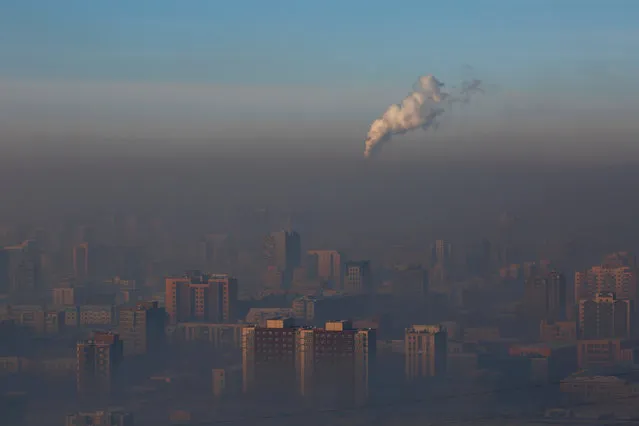
Emissions from a power plant chimney rise over Ulaanbaatar, Mongolia January 13, 2017. (Photo by B. Rentsendorj/Reuters)
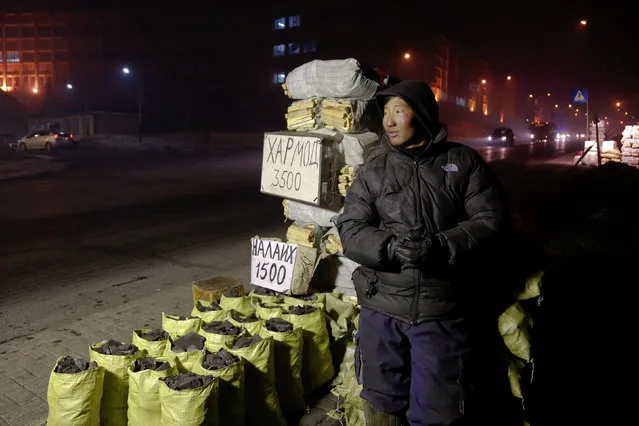
Bags of coal and wood are offered for sale in central Ulaanbaatar, Mongolia January 26, 2017. (Photo by B. Rentsendorj/Reuters)
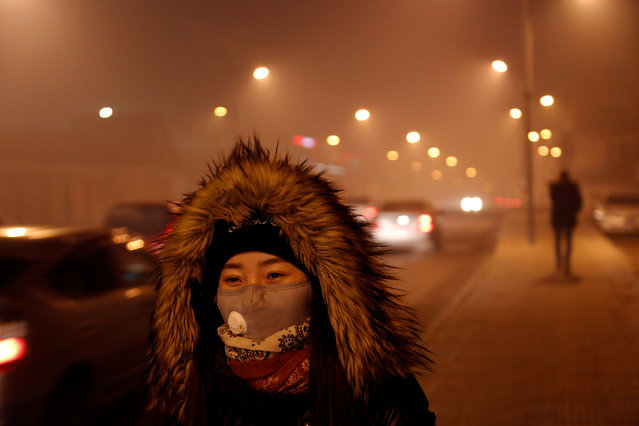
A woman wears a face mask in the part of the city near neighbourhoods known for burning coal for heating in Ulaanbaatar, Mongolia January 26, 2017. Not many people in Ulaanbaatar wear masks to protect themselves against pollution. (Photo by B. Rentsendorj/Reuters)
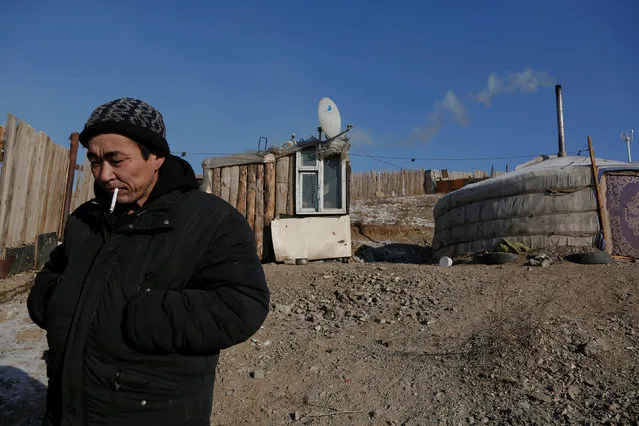
Setevdorj Myagmartsogt smokes a cigarette outside his tent-like ger home, which is heated by coal burning stove, in Ulaanbaatar, Mongolia January 29, 2017. Setevdorj Myagmartsogt lives with his wife, four children and two relatives in his ger near a coal depot not far from the centre of the Mongolian capital. (Photo by B. Rentsendorj/Reuters)
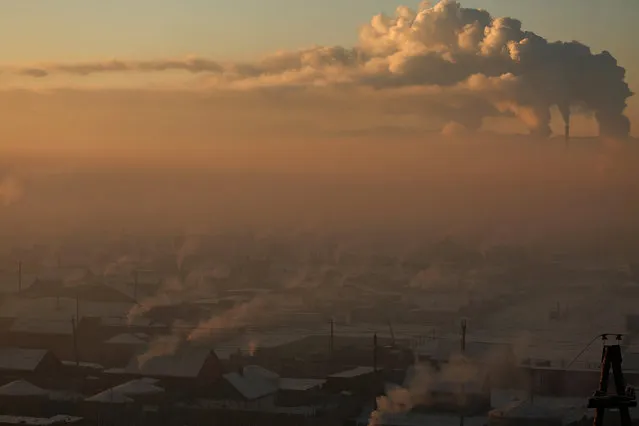
Power plant chimneys stand behind a coal burning neighbourhood covered in a thick haze on the outskirts of Ulaanbaatar, Mongolia January 19, 2017. (Photo by B. Rentsendorj/Reuters)
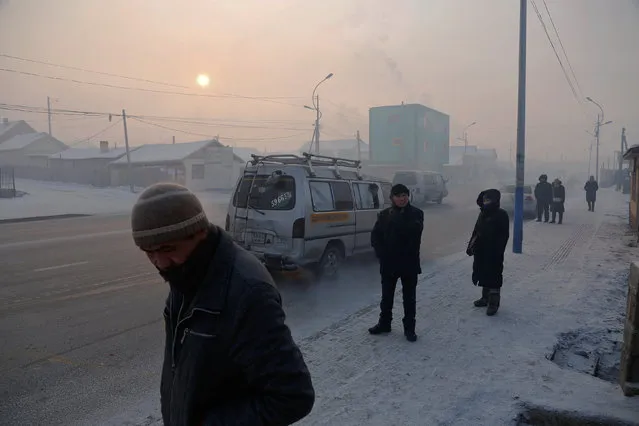
People commute in an industrial area on a cold day in Ulaanbaatar, Mongolia, January 19, 2017. (Photo by B. Rentsendorj/Reuters)
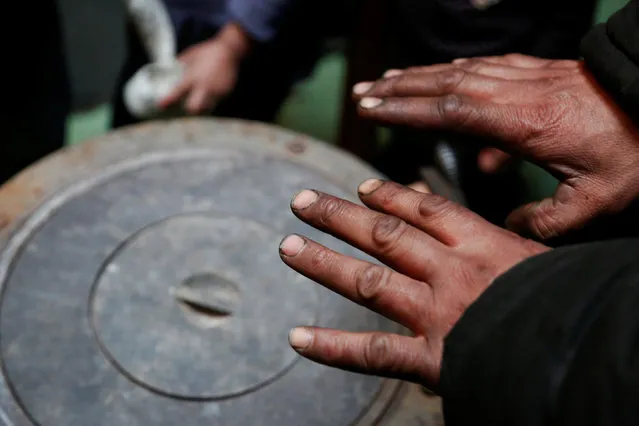
Setevdorj Myagmartsogt holds his hands above his new coal burning stove while talking to reporters in Ulaanbaatar, Mongolia January 29, 2017. Setevdorj Myagmartsogt lives with his wife, four children and two relatives in his cramped ger home above a coal depot not far from the city centre. The government offers free electricity to homes without access to city's central heating grid, but electric heating units are too expensive to families like Myagmartsogt's. The family doesn't have access to their own electricity line and borrows it from a neighbour. (Photo by B. Rentsendorj/Reuters)
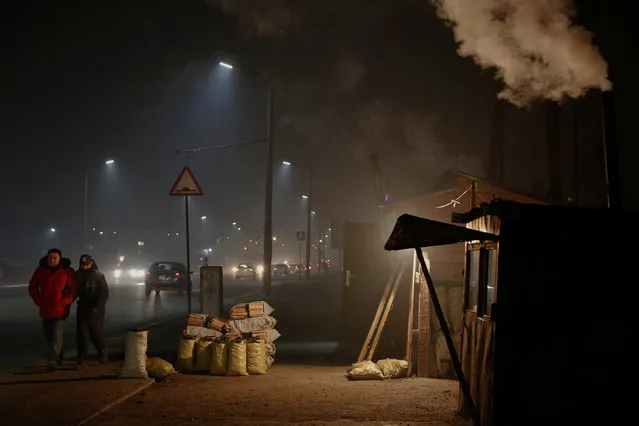
Bags of coal and wood are offered for sale in central Ulaanbaatar, Mongolia January 26, 2017. (Photo by B. Rentsendorj/Reuters)
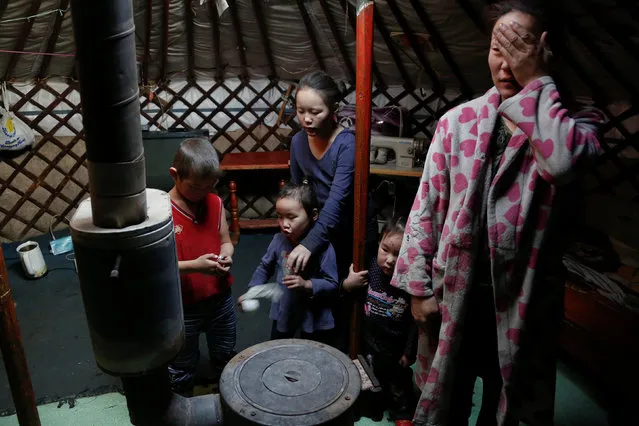
The wife and children of Setevdorj Myagmartsogt gather around their new coal burning stove while talking to reporters in their tent-like ger home in Ulaanbaatar, Mongolia January 29, 2017. Setevdorj Myagmartsogt, a part time worker at coal packing shop, lives with his wife, four kids and two relatives in their ger home near a coal depot not far from the city centre. (Photo by B. Rentsendorj/Reuters)
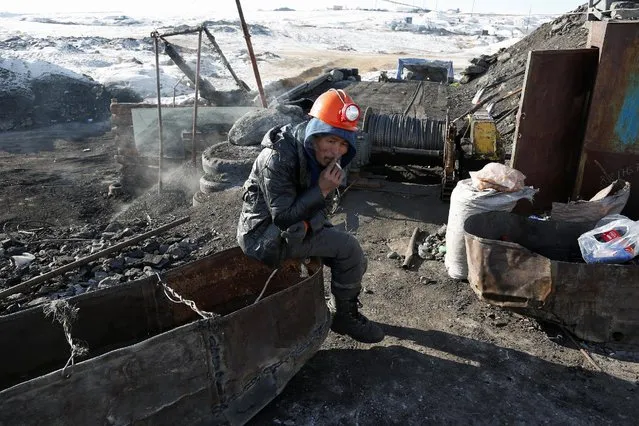
A miner smokes a cigarette at a primitive coal mine outside Ulaanbaatar, Mongolia January 27, 2017. The miners at the Nalaikh coal deposit, outside the Mongolian capital, go as much as 60 meters underground to mine the coal. (Photo by B. Rentsendorj/Reuters)
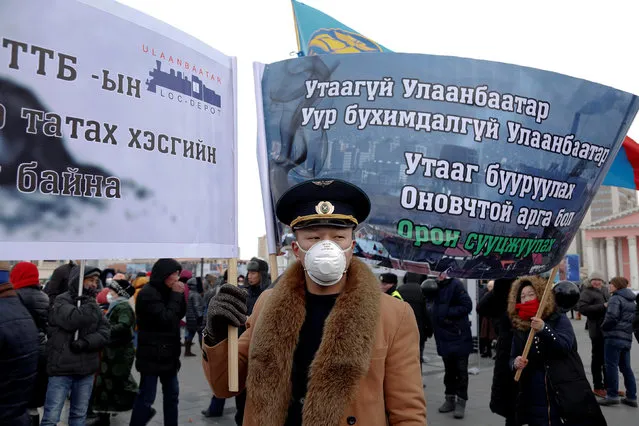
A protester wears a face mask and holds a banner during an anti-pollution protest in central Ulaanbaatar, Mongolia January 28, 2017. The banners read: “Smoke-free Ulaanbaatar”, “No More Agony for Ulaanbaatar”, “The Solution to Reducing Air Pollution is Urban Development”. (Photo by B. Rentsendorj/Reuters)

Workers enter the shaft of a primitive coal mine outside Ulaanbaatar, Mongolia January 27, 2017. The miners at the Nalaikh coal deposit, outside the Mongolian capital, go as much as 60 meters underground to mine the coal. (Photo by B. Rentsendorj/Reuters)
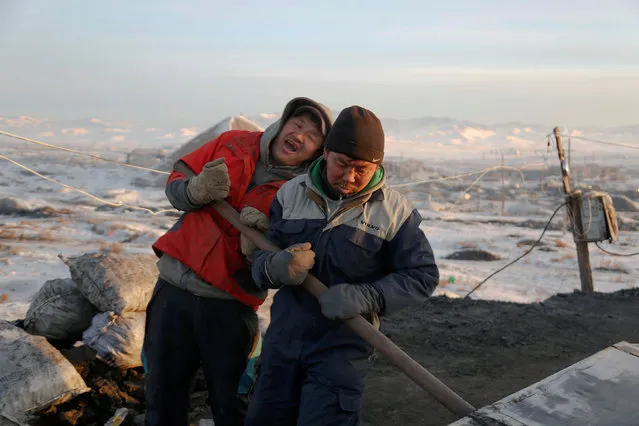
People work at a primitive coal mine outside Ulaanbaatar, Mongolia January 27, 2017. (Photo by B. Rentsendorj/Reuters)
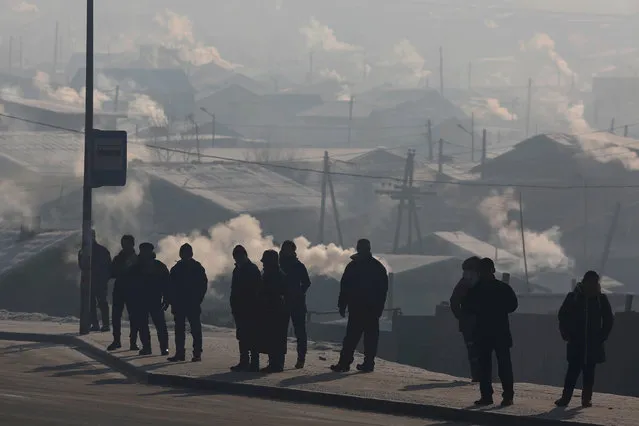
People wait for the bus on a cold polluted day in Ulaanbaatar, Mongolia January 19, 2017. (Photo by B. Rentsendorj/Reuters)
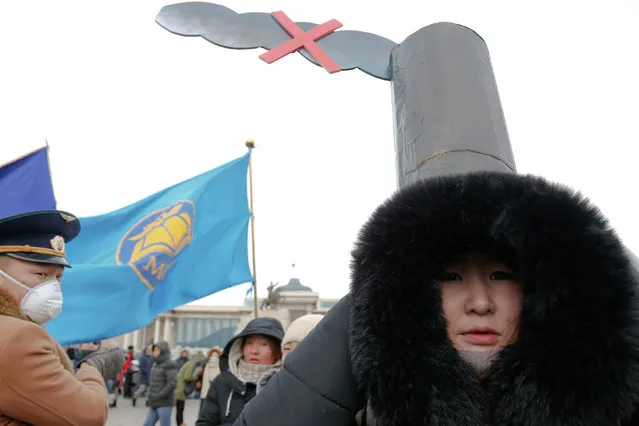
A woman wears a costume as she takes part in an anti-pollution protest in front of a government building in central Ulaanbaatar, Mongolia January 28, 2017. (Photo by B. Rentsendorj/Reuters)
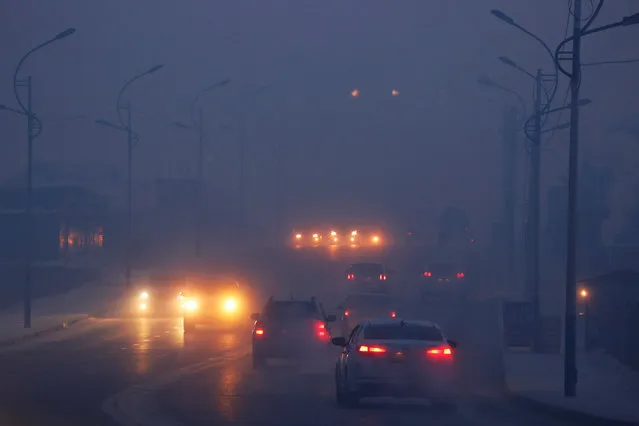
Cars drive through the thick haze on a cold polluted morning in Ulaanbaatar, Mongolia January 19, 2017. (Photo by B. Rentsendorj/Reuters)
09 Feb 2017 00:00:00,
post received
0 comments
